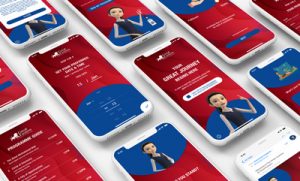Is data killing creativity? This is the big question many industry representatives from the world of marketing and advertising are asking. To answer this question, we need to first understand the kind of data we are referring to.
What is Consumer Data?
In today’s digital age, many brands are looking to every possible channel to engage with their consumers and build brand awareness. These brands are establishing a steady presence in both traditional and digital marketing platforms. As consumers interact with these platforms, each platform produces its own flow of consumer data.
Data is thus information about past consumer trends or preferences that can be used to justify marketing or advertising decisions. Traditionally, data has been used in a more retrospective way, whereby marketers store data following a customer’s purchase rather than take advantage of data to influence consumer choices from the start. Customer purchasing behaviours are recorded, assessed and filed away in a Customer Relationship Management (CRM) System after the activity has been completed. New entries are added but they are done in isolation, usually without any attempt to discern a purchasing pattern for the same customer. In contrast, recent methods of utilising data are more forward-looking. In what is called predictive analytics, marketers capitalise on data to anticipate what is likely to happen if an individual receives a certain type of message, invitation, or incentive as part of a creative communication at a designated point in their engagement.
The Interdependent Relationship between Data and Creativity
Data and creativity are not mutually exclusive, where one cannot exist with the other. Even while marketers are coming up with creative marketing campaigns, they still require data. This can be in the form of personal experiences and observation, collected over the course of their lifetime and have since translated into instinctive knowledge of their target audience. There are also times when creatives have to look beyond their personal experiences and draw on consumer data.
Consumer data gathered using emerging tools in market research, can support the creative process as such information can be turned into valuable insights. For example, marketers can understand who are their most receptive consumers, when and where best to reach out to them. This allows marketers to formulate an effective marketing strategy that will fulfill their objectives.
However, data should not be regarded as the holy grail of any marketing pursuit. Knowing who and where your customers are and the times they will be engaging with your brand, should never be an excuse to come up with sloppy, generic ads which would attract no one if your audience is not already paying attention. The role of data is to help your brand tailor your creative process to create ads that will genuinely appeal to your consumers.
How to Use Data to Boost Creativity?
There are opportunities for data and creativity to intersect to enhance consumer experience of your brand. Here are the ways you can employ data to inspire greater creativity in data-driven marketing:
1) Identify key audience
Market and audience analysis enable you to look for patterns that distinguish past buyers and define who your real audience is. Once you have identified your target audience, you can focus on creating the right content that they can connect with. For instance, your potential customers may come from a narrow age range or a specific income bracket. Alternatively, you may choose to do surveys to find out who is buying your products and why.
By observing key traits in your customers, you can focus your marketing efforts on a niche group of people who share these characteristics and will hence be most likely to purchase your products. You can also gain some flexibility in the number of people you contact. If you are working with a tight budget, your audience selection criteria can be tightened to produce fewer contacts.
2) Meet and retain consumer demand
Knowing your customer base makes it easier for you to design an item or service that will be the most relevant to your customers. Consumers appreciate brands that demonstrate an intimate understanding of their needs and cater products which they require. The knowledge of the salary tier that allows your customers to afford your products can also aid you in establishing a reasonable price.
Bain’s survey found that companies that make good pricing decisions are more likely to have the right pricing tools and data to support them. Online consumer services have provided a way for consumers to gather real-time pricing data. Customers can make comparisons across different companies before purchasing products, which extends even to business-to-business (B2B) transactions. Data is therefore essential to any brand’s practice of dynamic pricing to preserve market share.
3) Prioritise the most appropriate communication channel
Data can provide marketers with rich insights into the types of communications that will generate the desired results, as well as invaluable cautions as to potential unintended consequences. Such data can give guidance to not only the content of what will be communicated, but also the form, or the optimal media channel for the delivery of these messages. With the ability to seek out where your target audience is paying the most attention and anticipate their responses to marketing offers, creative ideas can be executed more efficiently and effectively.
For companies with a broad target market, marketing communications can become more individualised with data. Companies can create specialised content that can engage different audiences across varying touchpoints.
4) Tell a compelling brand story
Data can help you tell a stronger brand story. When used properly, data reinforces an argument and lends authenticity to a story. Immersing your audience in a story that is backed by data can eventually convince them to buy your products.
In fact, data-driven content that centres around the customer journey can ignite passions, stir emotions and sway attitudes in your customers.
5) Propel your brand to improve and innovate
The fast-paced, highly competitive business environment means it is increasingly crucial that businesses constantly keep track of the ever-changing needs of consumers. This data can assist businesses in pinpointing improvements to be made to their existing products or optimisations for their processes. By doing so, businesses can stay at the top of their game or even get ahead of their competitors.
Businesses can also rise up to the challenge of always coming up with something better, if they have data about emerging trends. Companies need to continuously invent new products and services or ways to capture their target market, because what has worked before may not work again in the future.
Two Sides of the Same Coin
“When used correctly, data is not the enemy of creative; it can be its most powerful ally.”
– Greg Weinstein, founder & chief strategist at G Major Content Marketing.
Companies should aspire to transform data that is collected, into useful information that can advise marketers on future marketing direction and how to engage customers in a more personalised manner. With data, marketers may uncover interesting insights that can be used to deploy creative messaging to the right people, at the right time and the right place. Gone are the days when data scientists and creatives of a single company live in separate worlds, never collaborating or even meeting each other.
However, any marketing plan that makes use of data to better target consumers still requires a human touch. It is up to marketers to not let data limit their creative freedom but also know when data can help to boost their marketing campaigns. It is a delicate balancing act but marketers would do well to remember that, after all, data and creativity are both two sides of the same coin.






